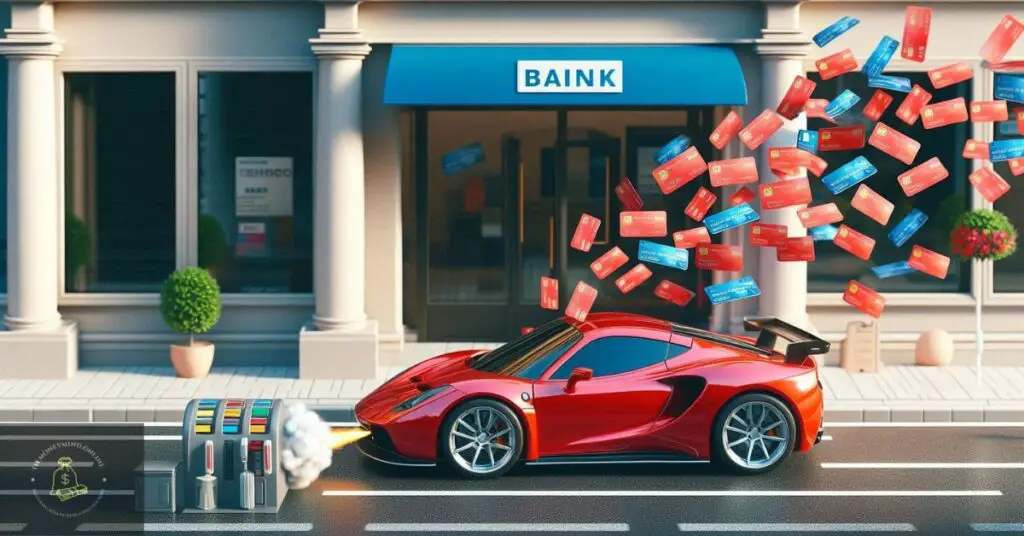Can You Consolidate Car Loans and Credit Cards? Managing multiple debts can be overwhelming, especially when you have a mix of car loans and credit card balances. You might have heard about debt consolidation as a potential solution, but is it possible, or even a good idea, to consolidate car loans and credit cards together?
In this comprehensive guide, we’ll explore the concept of debt consolidation, its benefits and risks, and how you can go about consolidating these types of debts.
Can You Consolidate Car Loans and Credit Cards?
Understanding Debt Consolidation

Debt consolidation is a financial strategy that allows you to combine multiple debts into a single payment. The goal here is to simplify your finances, reduce the stress of managing various payments, and potentially save money on interest over time.
But how does this work, and what are the different types of debt consolidation options available?
What Is Debt Consolidation?
At its core, debt consolidation involves taking out a new loan to pay off existing debts. Instead of dealing with multiple payments to different creditors, you make just one payment to your new lender.
Ideally, this new loan has a lower interest rate than your existing debts, which can help you save money in the long run. It’s a straightforward concept, but like any financial decision, it comes with its pros and cons.
Types of Debt Consolidation Loans
Debt consolidation can be achieved through various methods, each with its own set of advantages and disadvantages. The most common types are secured and unsecured loans, and balance transfer credit cards.
Secured vs. Unsecured Loans
A secured loan is backed by collateral, such as your home or car. Because the lender has a way to recover their money if you default, these loans often come with lower interest rates. However, the downside is that if you’re unable to make payments, you risk losing your collateral.
On the other hand, an unsecured loan doesn’t require collateral, which can be less risky in terms of asset loss. However, because the lender has no security, these loans usually have higher interest rates.
Balance Transfer Credit Cards
Another option for debt consolidation is using a balance transfer credit card. This involves transferring your existing credit card balances to a new card with a lower interest rate, often with a 0% introductory rate for a limited period.
If you can pay off the balance during this promotional period, you can save a significant amount on interest. However, if you don’t pay it off in time, the interest rate could jump, leaving you back where you started—or worse.
Why Consider Consolidating Car Loans and Credit Cards?
Debt consolidation isn’t just about lowering interest rates; it’s also about simplifying your financial life and managing debt more effectively. But why should you consider consolidating car loans and credit cards specifically?

Simplifying Your Finances
One of the biggest advantages of consolidation is the simplification of your finances. Instead of juggling multiple payments, due dates, and interest rates, you’ll have just one monthly payment to keep track of.
This can significantly reduce the stress and time spent on managing your debt.
Potential Interest Savings
Another compelling reason to consolidate is the potential for interest savings. Credit cards often have high-interest rates, particularly if you’ve missed payments or carry a high balance.
By consolidating these debts, you might be able to secure a lower interest rate, which can save you money in the long term.
Lower Interest Rates: How They Help
When you secure a lower interest rate through consolidation, more of your monthly payment goes towards paying off the principal rather than just covering interest.
This means you could pay off your debt faster and with less money overall. It’s a smart move if you qualify for a loan with a significantly lower interest rate than your existing debts.
The Impact on Monthly Payments
Consolidating your debts could also lower your monthly payments, giving you more breathing room in your budget.
This can be particularly helpful if you’re struggling to meet your financial obligations each month. Lower payments can free up cash for other expenses or allow you to pay down your debt more aggressively.
Managing Multiple Debts
Debt consolidation is also a strategic way to manage multiple debts. It can be difficult to keep track of different creditors, payment dates, and amounts.
Consolidation streamlines this process, making it easier to stay on top of your financial commitments and avoid missed payments.
Also Read – How Do Financial Intermediaries Make Investment Easier?
How to Consolidate Car Loans and Credit Cards
If you’ve decided that debt consolidation is the right move for you, the next step is to understand how to go about it. Here’s a step-by-step guide to help you through the process.
Assessing Your Financial Situation
Before you dive into consolidation, it’s crucial to take a close look at your current financial situation. This includes reviewing your credit score and calculating your total debt.
Reviewing Your Credit Score
Your credit score plays a significant role in determining the interest rate and terms you’ll qualify for on a consolidation loan. A higher credit score generally means better terms. If your score isn’t where you’d like it to be, you might want to take some time to improve it before applying for a consolidation loan.
Paying down existing debt, avoiding new credit inquiries, and correcting any errors on your credit report can all help boost your score.
Calculating Your Total Debt
It’s also important to have a clear understanding of how much you owe. Add up all your car loans, credit card balances, and any other debts you’re considering consolidating. This will give you a target amount for your consolidation loan and help you determine whether consolidation is feasible.
Exploring Your Consolidation Options
Once you’ve assessed your financial situation, it’s time to explore your consolidation options. The most common options include personal loans and home equity loans.
Personal Loans for Consolidation
A personal loan is one of the most straightforward ways to consolidate debt. These loans typically come with fixed interest rates and repayment terms, so you’ll know exactly what your monthly payment will be and when your debt will be paid off.
This predictability can be a huge relief if you’ve been struggling with variable-rate credit card debt.
Using a Home Equity Loan
If you’re a homeowner, you might also consider using a home equity loan or line of credit (HELOC) to consolidate your debts. These loans often have lower interest rates because they’re secured by your home.
However, they also come with significant risks. If you’re unable to make your payments, you could lose your home. This option is best suited for those who are confident in their ability to make the payments.
The Application Process
After deciding on the best consolidation method for your situation, you’ll need to go through the application process. This involves gathering the necessary documentation and choosing the right lender.
Gathering Necessary Documentation
Lenders will require documentation to assess your financial situation and determine your eligibility for a consolidation loan.
This typically includes proof of income, credit reports, and details of your existing debts. Having these documents ready can speed up the application process and increase your chances of approval.
Choosing the Right Lender
Not all lenders are the same, so it’s important to shop around. Compare interest rates, fees, and terms from different lenders to find the best deal. It’s also wise to read reviews and check the lender’s reputation to ensure you’re working with a trustworthy institution.
Benefits and Risks of Debt Consolidation
Debt consolidation offers several benefits, but it’s not without its risks. Understanding these pros and cons can help you make an informed decision.
The Advantages of Consolidation
The primary advantages of debt consolidation are simplified payments and potential interest savings, but there are other benefits as well.
Streamlined Payments
With debt consolidation, you go from managing multiple payments each month to just one. This can significantly reduce the likelihood of missing a payment, which can otherwise lead to late fees and higher interest rates. It also makes budgeting easier, as you’ll know exactly how much you need to set aside each month.
Reduced Stress and Anxiety
Financial stress is a common issue for those managing multiple debts. Consolidating your debts can alleviate some of that pressure. With only one payment to worry about, you may find it easier to manage your finances and reduce the mental burden of debt.
The Drawbacks to Be Aware Of
While consolidation has its benefits, there are also potential downsides to consider.
Potential for Higher Overall Costs
While consolidating your debts can lower your monthly payments, it might extend the life of your loan. This means you could end up paying more in interest over time, even with a lower rate.
It’s important to carefully consider the long-term costs before committing to consolidation.
Risk of Losing Collateral
If you use a secured loan to consolidate your debts, there’s a risk of losing your collateral if you’re unable to make payments.
For example, if you use your home to secure a consolidation loan and then default, you could face foreclosure. This is a significant risk that should be weighed carefully.
Tips for Successful Debt Consolidation
To make the most of debt consolidation, it’s essential to follow some best practices after consolidating your debts.
Maintaining a Budget Post-Consolidation
Consolidating your debts is just the first step. To avoid falling back into old habits, it’s crucial to maintain a budget.
Track your spending, prioritize paying off your debt, and avoid accumulating new debt. Sticking to a budget can help you stay on track and make the most of your consolidation efforts.
Avoiding New Debt
After consolidating your debts, it can be tempting to start using your credit cards again. Resist this urge!
The goal of consolidation is to reduce your debt, not add more. Keep your focus on paying off what you owe, and avoid the trap of racking up new debt.


2 thoughts on “Can You Consolidate Car Loans and Credit Cards?”